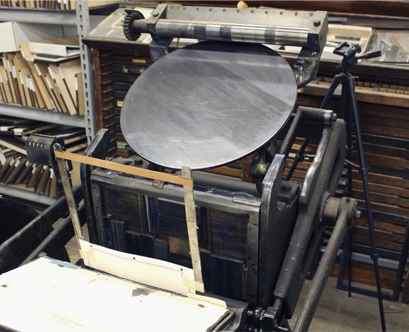Touch and See

All funeral stationery is the same, right?
When digital printing came into vogue across the US it served as a nice addendum to offset printing and all the specialty processes that came with it. There was a limitless selection of paper types, thickness, color and materials or substrates available to fit any sentiment or tone the graphic designer or print master was trying to convey. Slowly the speed and convienience of digital printing almost totally eclipsed any connection to the generations of family craftsman that handed down intimate knowledge of all the ways and methods individually developed through years of visual impressions on paper. Replicating a continuous tone image, like a photo or art replication, became the dominate visual approach to make the convenience of the print method.
What was Old is New
Just like the evolution of business cards from once beautifully crafted leave behinds to the easy digital ink jet printed cousin, the standards for business cards had changed. Pretty soon everything looked the same and nothing seemed special. After years of these thin papered home printed cousins (digital paper was really limited at the time) companies decided to go back to the future. Through ganging up large print orders vendors could affordably recreate the craft printing feel with deep embossing of a 110 pound cover stock. The difference was palpable as one handed over to a potential client their rich, substantial feeling, business card to communicate a uniqueness through the tactile quality of the emboss or the metallic shimmer of metal through a foil stamp.
Faster, Cheaper, Better?
Funeral stationery, as the industry calls it, followed suit with the newer faster cheaper method of printing. What happened to funeral stationery followed the ubiquitous business card. Soon craft printers were found in short supply only found teaching in college or running art/craft studios keeping the flame alive. Pretty soon what was once a beautiful keepsake became a throwaway. What was once precious became a reflection of the disposable society that grew it.
Back to the Future
Mooney Keehley never made the switch. Mooney Keehley, instead, rediscovered the craftsman who were being displaced even in a print town like Rochester, New York. The guy who bought the company, an RIT graduate named Ken Hampson, began acquiring old custom-modified hand presses and hand fed machines like the Chandler & Price or the Heidelberg Windmill for example https://mooneykeehley.com/craft-printing/our-equipment/. Ken also started seeking out these craftsman struggling to find work, to continue the craft print tradition John Mooney first began back in 1945.
A Commitment to Craft
Recently, Ken began the arduous task of re-inventing his company. After he got the production pieces in place it was time to look at his company from the inside out. He revised and simplified his product list. He committed Mooney Keehley to create new product that combines the best of what digital had to offer but always with an eye to substantial quality papers and surface treatments. Ken felt that even though funeral homes were individual family-owned institutions, he could reach more folks by increasing digital communication and creating a more user friendly website to display these new creations to this caring audience.



